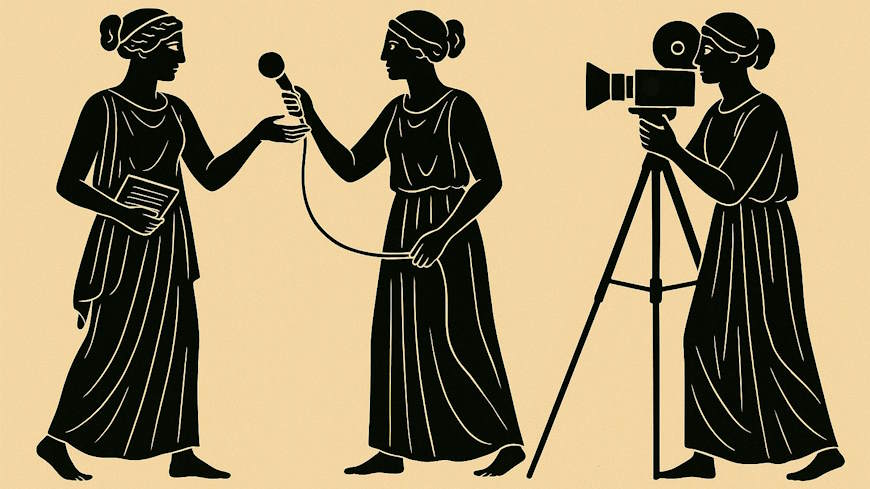Download "The status of artists and cultural and creative professionals in Europe: social rights and circulation"
The European Audiovisual Observatory, part of the Council of Europe in Strasbourg, has just published its latest in-depth legal analysis: The status of artists and cultural and creative professionals in Europe: social rights and circulation. This brand new report offers a comprehensive exploration of the realities, challenges, and opportunities facing Europe’s artists and creative workers today. It has been authored by Sophie Valais, Deputy Head of the Observatory’s Legal Department.
Key Findings at a Glance:
- 7.7 million people work in Europe’s cultural and creative sectors – that’s 3.8% of total EU employment.
- Nearly one in three creative professionals is self-employed, more than double the EU average.
- 68% of artists juggle more than one job – with over a third working outside the sector to make ends meet.
- Over half of audiovisual creators (directors, screenwriters, etc.) face long periods with no paid work.
- 53% of audiovisual professionals work cross-border – but face major tax and social protection hurdles.
|
Chapter One sets the scene with the key question: who can be defined as an artist? The author unpacks the complexity of defining what it means to be an artist or cultural professional in today’s shifting landscape. The report looks at Europe-wide approaches to the tricky task of definition before zooming in on the various national definitions. The report explores how the lack of a universal definition continues to shape rights, recognition, and policy across Europe. Chapter Two dives into the numbers, painting a detailed portrait of a sector powered by youth, freelancers, and high mobility. With SMEs and micro-enterprises at its core, the sector thrives on diversity. And yet artists and creative professionals working in the audiovisual industries remain vulnerable to instability. The author highlights two especially significant trends having a huge impact on their working lives: COVID cut a hole in the creative industries, slashing companies and job opportunities alike. Digitisation of production processes and, more recently, the rise of AI generated content represent concrete new challenges. Chapter Three tracks the policy and legal framework – from UNESCO’s 1980 Recommendation on the Status of the Artist, through international and pan-European policy - to today’s EU initiatives such as the Platform Work Directive. This chapter charts how policymakers are slowly but surely adapting to the changing nature of cultural work. Thus, in November 2023, for example, the European Parliament adopted a resolution with recommendations to the Commission on an EU framework for the social and professional situation of artists and workers in the cultural and creative sectors. Chapter Four addresses the main challenges for artists and cultural professionals. It brings to life the realities of atypical work, project-based contracts, undeclared work, and false employment undermining access to social protection. This chapter also looks at pressing structural issues such as taxation, cross-border mobility, double taxation, and administrative hurdles. These challenges highlight the structural barriers to fair working lives and conditions for Europe's creative workforce in the audiovisual industries. Chapter Five explores different national approaches, citing various examples from across Europe. From Germany’s Artists’ Social Insurance Fund to Belgium’s innovative new recognition system and France’s “intermittents du spectacle” status the report demonstrates the various national policy solutions being developped to better support artists and the creative workforce. Chapter Six explores the role of social dialogue and collective negotiation. Here, the author highlights the growing role of unions, professional organisations, and new digital worker collectives in helping to shape fairer conditions in the creative economy. Collective bargaining is shown to be a driver of innovation and fairness in this rapidly evolving sector. Finally, Chapter Seven offers concluding reflections on recent developments and future challenges. The report concludes that the professional and social status of artists and creative professionals is gaining long-overdue recognition. Through a combination of national innovations, coordinated European efforts a more inclusive and responsive policy environment is taking shape. As the sector continues to evolve, ensuring fair working conditions, effective social protection and legal clarity is seen as essential to sustaining the vitality, diversity, and resilience of Europe’s cultural and creative landscape. This groundbreaking study from the European Audiovisual Observatory exposes the challenges facing Europe’s 7.7 million cultural professionals – and the bold solutions offered to secure their future. This new report is essential reading for policymakers, industry leaders, and anyone passionate about safeguarding the future of cultural and creative work.
|
